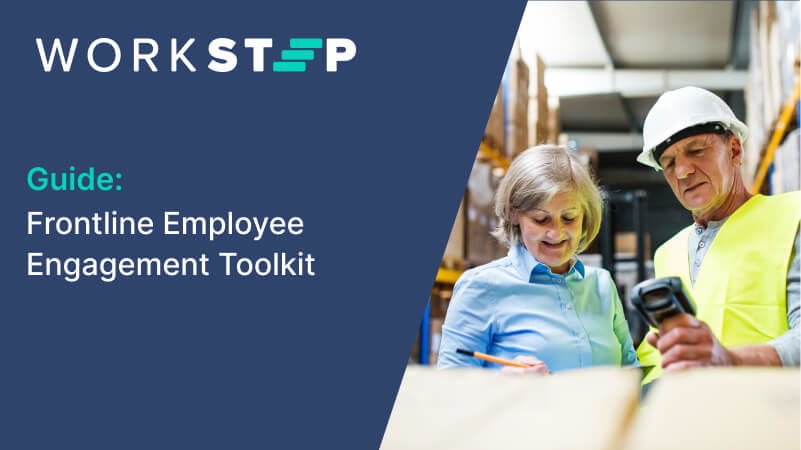Securing funding for employee engagement initiatives isn’t a sprint, it’s a marathon, an expedition, something that feels like the business equivalent of scaling Mount Everest for many leaders. Rather than scaling the icy slopes toward a windswept summit, proponents who understand the innate value of engagement are often met with frigid critics who would rather romanticize a positive employee experience from their guidebooks than prepare for the journey ahead, nevermind allocate the funding needed for a successful expedition.
Employee engagement champions are faced with an uphill battle, often utilizing weathered tools they found along the trail left over from those who tried before them and running off the fumes of initiatives well beyond their best-by date. We see the challenges these leaders face as they try to convince operational decision makers that investing in resources like employee engagement software is not just beneficial, but critical for the mission – the growth and continuity of the business.
That’s where WorkStep comes in, acting as the equivalent of your Sherpa up that mountain, a guide to safely reach the summit and look down at the flourishing workplace ecosystem below. We’ll equip you with razor-sharp advice that enables you to build an ironclad business case for your engagement programs, a way forward, backed by the experience of having led other organizations to the same great peak. Brace yourself to sway your organization’s key decision-makers with trail-tested data and compelling stories.
If you want to get operational leaders on board initiatives – speak their language and align with their priorities
Can you make the priorities of your decision makers your own? That’s the secret to unlocking their approval. Ray Cabrera, the Senior Vice President of Human Resources & Chief Administrative Officer at Knowles Corporation, offers a valuable nugget of wisdom. To win the operations team’s approval, he suggests tailoring your human capital strategy around the holy trinity of their objectives: productivity, service, and cost. They’re the engines that drive organizational performance and prominently appear in operational KPIs. As you architect your employee engagement strategic blueprint, ponder over how each program can complement these key focus areas. Consider including these facts in your persuasive presentation:
- Did you know engaged employees ramp up profitability by 23% and productivity by 18% more than their unengaged counterparts? (Lattice)
- Believe it or not, companies that consistently deliver top-notch experiences to customers and employees alike can charge a premium of up to 16% for their products and services. (Harvard Business Review)
- A breakthrough 2022 report from the Harvard Business Review (HBR) unearthed a fascinating correlation. If an organization can propel themselves from the bottom to the top quartile in employee experience metrics, they could potentially skyrocket their revenue by over 50%, with profits hot on the heels. (WorkStep)
Highlight the tangible impact within your own business use case
The language of business is numbers and money. Don’t hesitate to dive deep into the data, demonstrating precisely how your employee engagement initiatives will drive positive results within your organization. Recall the trifecta of productivity, cost, and service. Develop illustrative charts that paint a compelling picture of expected outcomes. Here are some powerful scenarios you can create:
Trimming the turnover: Slash turnover costs by XX% or $X – thousand (or million!) Calculate the hidden costs of employee turnover and project the potential savings achieved through employee engagement initiatives.
Delivering more, faster: Boost product deliverability by x% or reach x more customers. To illustrate productivity, Cabrera encourages measuring product and service throughput—perhaps gauged by reducing the average time for new employees to reach full production levels. This not only impacts service level, but may also increase on-time delivery, driving customer satisfaction. With platforms like WorkStep, you can even slice and dice your metrics by location or role. For instance, you could calculate how much more an assembly line operator at a specific location can achieve post-initiative.
Slicing the learning curve: Cut new employee ramp-up time to x. Gauge the speed at which a new employee reaches peak productivity. Engagement platforms offer invaluable insights into how quickly a new recruit is progressing with their training, interacting with their supervisors, and adapting to their new workspace. Still stuck? Here are 10 other KPIs to track and measure. As you build your case, be armed with compelling data that directly connects employee engagement to lucrative financial outcomes.
Emphasize the connection between engagement & performance with concrete examples
Show, don’t just tell. Go beyond merely stating that an engaged workforce correlates to improved business performance. Bring to life how enhanced employee engagement fuels customer satisfaction, sparks innovation, and revamps overall operational efficiency.
How does continuous listening and actioning on employee feedback support higher productivity?
Employee input often uncovers opportunities for process optimization or highlights obstacles hindering goal achievement. Responding to real-time feedback can create an environment where employees feel acknowledged and valued. This tends to bolster their engagement, driving up productivity. Consider the insights that might arise from proactive feedback:
- A worker suggests a rearrangement of the manufacturing line that would reduce the physical effort required and speed up the assembly process.
- A truck driver suggests a change in the delivery route that would avoid heavy traffic during certain hours, making for faster deliveries.
- A cashier advocates for a new scanning system to accelerate the checkout process.
How can employee feedback help you deliver better service and drive up profit margins?
Straight-from-the-frontline feedback can spotlight areas of customer service ripe for improvement, potentially boosting satisfaction and sales. Engaged employees often go above and beyond for customers, offering superior service that can distinguish your company from rivals and warrant premium pricing. By resolving issues surfaced through employee feedback, companies can reduce turnover, trimming recruitment and training costs, and enhance customer outcomes, lifting profit margins. Specific feedback scenarios that could bolster profit margins include:
- An employee mentions a quality control issue.
- A warehouse worker suggests an improved packing technique that reduces the incidence of damaged goods.
- A sales associate suggests implementing a personalized follow-up system for loyal customers.
How can employee feedback help you cut costs?
Employee input can expose inefficient processes or unwarranted spending that can be axed, aiding in the reduction of operational costs. Lowering employee turnover by nurturing engagement can lead to substantial savings in recruitment, training, and lost productivity. Engaged employees generally take fewer sick leaves and are less prone to workplace accidents, leading to additional cost savings. Examples of how this plays out in the real world:
- An employee points out that a certain machine part breaks down frequently and suggests switching to an alternative which reduces maintenance costs and downtime.
- A dispatcher notices that trucks often return from deliveries half-empty and suggests better coordinating deliveries to maximize truck capacity resulting in fuel cost savings.
- A store associate suggests that scheduling should be adjusted to better match customer foot traffic patterns. This reduces unnecessary labor costs during slow periods.
These vivid use cases underscore the robust link between employee engagement and the resilience and consistency of your workforce.
Adopt operational lingo during your presentation
Winning hearts and minds involves speaking the listener’s language. To secure a resounding “yes” from your operations leaders, adopt the vocabulary that resonates with their goals and ambitions Try reframing these employee engagement themes for their operational counterparts:
| HR Lingo | Operational Lingo |
| Talent management | Workforce optimization |
| Performance management | Process improvement |
| Leadership development | Team optimization |
| Employee recognition | Incentive programs |
| Workplace wellness | Health and safety initiatives |
| Onboarding | Ramp-up time |
| Diversity and inclusion | Equity and fairness |
| Employee feedback | Voice of the Employee/Voice of the Customer/Customer Experience |
| Listening to feedback | Continuous improvement |
| Actioning on feedback | Action planning |
In doing so, you’re proving your grasp of the hurdles they encounter and the measurements that matter. This strategy not only bolsters the relatability and persuasive power of your case, but also positions you as an astute ally who can harmonize the realms of HR and operations. Bear in mind, crystal-clear communication is the key to underscoring the significance of employee engagement and its reverberating impact on the business. Always adapt your narrative to resonate with your listeners and make every word pack a punch!
Tori Cook, Senior Director of Demand Generation & GTM Operations | tori@workstep.com
Tori Cook is the Senior Director of Demand Generation & GTM Operations at WorkStep. With a proven track record of generating impactful results, Tori is passionate about sharing her expertise in operations, marketing, and workplace culture with the WorkStep blog readers.



